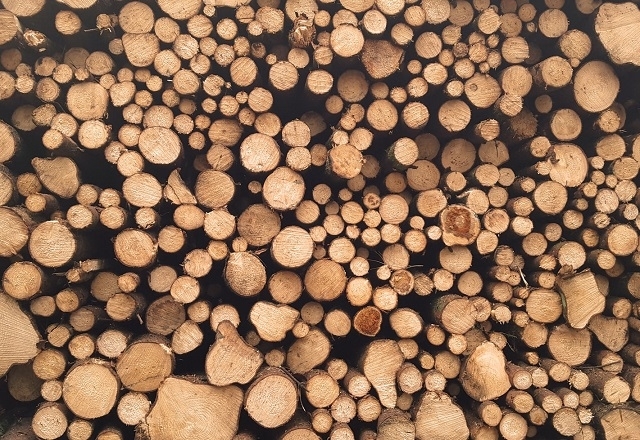Why does timber have a negative carbon footprint?
Published: 20/04/20 By: Mike Bekin
There is a material revolution happening in the construction industry and it’s having a major positive impact on the environment. By swapping cement and steel for timber, the notoriously polluting construction sector could not only avoid greenhouse gas emissions but actually make their projects carbon negative. This is because timber acts as a natural carbon sink – storing the CO2 that’s taken from the air by the trees that are harvested and used to create timber.
How does it work?
Mother Nature is quite clever really. Indeed, our planet has natural mechanisms in place to help keep carbon dioxide at optimum levels.
As a natural product, wood is designed to help keep the balance in check using photosynthesis, which takes carbon from the atmosphere and converts it into wood, which is mostly carbon based atoms.
During this process, as only sunlight and water are required to fuel it, CO2 is absorbed and broken down so that oxygen is released back into the atmosphere whilst the carbon remains in the wood.
In this manner, wood effectively acts as a carbon sponge and that’s why forests play such a vital role in the global carbon cycle – now more than ever as we pump increasing amounts of CO2 in the atmosphere.
Thanks in no small part to the intervention of the FSC, some forests are protected, resilient, and capable of producing large volumes of timber sustainably. This means that construction projects built primarily using materials derived from these forests might have a minimal or even negative carbon footprint.
Using buildings as carbon stores
The construction industry is responsible for 39% of all carbon emissions worldwide so something truly needs to be done to help them change their ways. There are many things they could be doing to help cut down their carbon footprint, but using wood-based materials in their projects is a great place to start.
The largest potential, of course, lies in external walls (timber cladding), floors, and roofing, which, together with the frame and insulation. can significantly reduce the carbon footprint of a building if built with timber. Huge amounts of carbon can potentially be stored in a building over the course of its life as long as it is well-maintained.
What’s more, any wooden parts of the buildings that are no longer used can also be easily recycled into other products such as furniture, toys, etc – keeping the carbon locked away as the wood enjoys a new lease of life.
Looking ahead
An increased use of timber is perhaps one of the most logical ways that the construction sector can help to stabilise an increasingly unstable climate. But there needs to be a major change if we have any hope of really making an impact.
If business is to continue as usual, for example, then just 0.5% of new buildings will be built with timber by 2050. If mass timber manufacturing increases, however, then studies have suggested that as much as 90% of timber construction is conceivable. This would result in a world where 700 millions tonnes of carbon are stored per year.
There are currently 11,000 million tons of carbon being emitted per year, so this would only offset a percentage of the damage being done. However, if the construction sector, one of the world’s most notoriously polluting, can set a precedent by making a more considered move into a more sustainable future then it’s only surely a matter of time before the rest of the world follows suit.
Tags: Environmental, Timber
Categories: Insights
